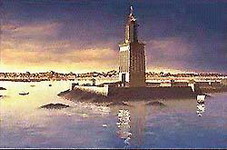

The 2003 yellow-to-orange bump was caused by a CIA contractor's claim to have found hidden terrorist strike information in Al Jazeera footage. (An absurdity which culminated, this past December, in an inevitable "orange to orange, only more so" status adjustment following the underwear bomber's fail-o-rama.) Back in 2003, another of these magical devices led to one of the first of a seven-year oscillation of yellow-orange threat level flip-flops. But if you have a fear of flying, it’s off to Gitmo.Īt least DHS is using psychobabble, not actual magic-or outright fraud. And so, as one commenter astutely pointed out, if you take a Xanax to conceal the explosive load in your pants, you’ll be fine. Here's the basic idea: as you wait in line at the airport checkpoint, thermal cameras lots of sensors will read your body temperature, your heart rate and respiration, your skin's moistness, and the look in your eyes. The latest variation is the “machine that can read your thoughts at airport security lines." The US Department of Homeland Security is spending $7 million a year trying to develop technology that can find the bad guys by reading their minds. But hey, snake oil salesmen with ridiculous magical devices have pilfered money from defense coffers since time immemorial.

Gizmodo reported on the questionable science behind this wacky device back in November. You know, finding water with a divining rod. In a previous interview with BBC News, McCormick asserted that his device operates on the principle of dowsing.
#Sostatus tech tv#
Never mind that the thing looks like a staple gun attached to an old TV antenna. This would be funny had the uselessness of the device in question not led to " hundreds" of alleged deaths caused by faulty devices failing to predict suicide truck bombs. In tests undertaken by BBC Newsnight, the device turned out to contain nothing but the sort of anti-shoplifting store merchandise tag that makes the door beep if the saleslady forgot to cut the tag off your new pants. Jim McCormick, the director of British firm ATSC, promised that his wand could identify bombs with its "special" electronic card (which his company also makes). The BBC reported on the latest head-desker earlier this week: The ADE-651 "magic wand" bomb detector, which was supposed to detect TNT, among other things, doesn't work. There's always been a pipeline from charlatans to the defense money train, and the worst chicanery usually happens when thorny, headache-inducing policy problem are addressed with spiffy future tech. Nevertheless, the cumulative weight of confirmation for Herodotus as referring to a well-known figure in the Greek world is impressive.I love sci-fi technology as much as (or more than) the next guy, but the military obsession with high tech panaceas might be doing more harm than good. Not all scholars, however, accept that the marks on these jars refer to the Sostratos of Herodotus, and they (like the anchor) may again attest only to the kindred network, not the man. Moreover, clay storage jars are found throughout Etruscan archaeological sites of the period marked with the Aeginetan letters "SO", which may have stood for Sostratos, and are often presumed to be the packaging in which his goods were delivered.

The names of Sostratus and Laodamus – perhaps his grandfather and father – have been found in Egypt, supporting the view of his coming from an important family of international Aegina traders. A stone anchor dedicated to Apollo at Gravisca (the port of the Etruscan city of Tarquinii) is for example thought to have been dedicated by Sostratos: it can now be seen at the museum there. A previously otherwise unknown and perhaps legendary figure, Sostratus has received increasing validation from modern archeology. The veracity of Herodotus has often been challenged, both in ancient and modern times, and the instance of his casual reference to Sostratus as a well known presence is something of a test case.


 0 kommentar(er)
0 kommentar(er)
